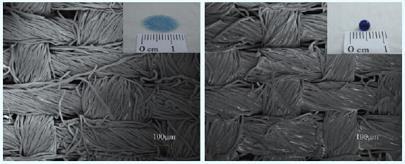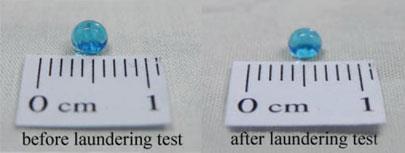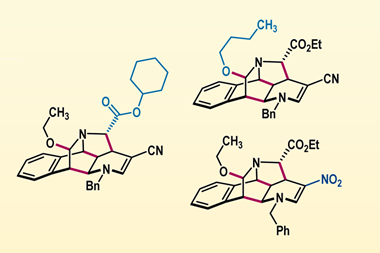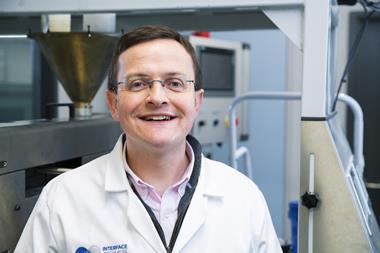Chemists make superhydrophobic cotton fabric that can survive the laundry
Chinese researchers have made cotton fabric that is completely impervious to water and can be put through the laundry without losing its superhydrophobic properties, overcoming a key obstacle in the commercialisation of these highly waterproof materials.
The waterproof cotton was made by grafting a super-hydrophobic polymer onto bundles of cotton fibres. This polymer prevents water from adhering to the cotton surface, and since water has a high surface tension, the droplets form into spheres and simply roll off. In this process, any dirt or other surface materials are also collected and removed - an effect that can be observed in nature on leaves of the Lotus plant, which are kept clean and dry by nano-sized crystals of wax.
Superhydrophobic fabrics have been made before, but their waterproofing effect tends to fade with washing, and they can be uncomfortable to wear if they prevent air flow through the fabric. Now, researchers at the Chinese Academy of Sciences in Shanghai, China, have developed a much more durable and comfortable solution.

’Our superhydrophobic cotton looks almost the same as normal cotton fabric,’ says Jingye Li, who worked on the project. ’The small air holes between the cotton bundles are retained, which make it breathable and comfortable to wear, and it feels smoother than cotton because of the superhydrophobic nature of the fabric.’
Li’s team tested the durability of the fabric with different detergents and included 50 stainless steel balls in the washes to simulate repeated laundering. After undergoing an equivalent of 250 domestic washes at 40?C, the fabric still maintained its superhydrophobic properties.

The secret to the durability, Li explains, is how the hydrophobic polymer is attached to the cotton. Rather than simply coating the fabric, the cotton is first irradiated with gamma rays, which forms covalent bonds between the surface and the polymer which cannot easily be separated.
’Few superhydrophobic surfaces are abrasion resistant as the high roughness required makes them fragile, so it is impressive for a textile to survive this many washing cycles,’ says Neil Shirtcliffe, a superhydrophobic materials expert at Nottingham Trent University, UK. ’The results are very promising, but are still some way from a finished product.’
Lewis Brindley
References
B Deng et al, Adv. Mater., 2010, DOI: 10.1002/adma.201002614






1 Reader's comment